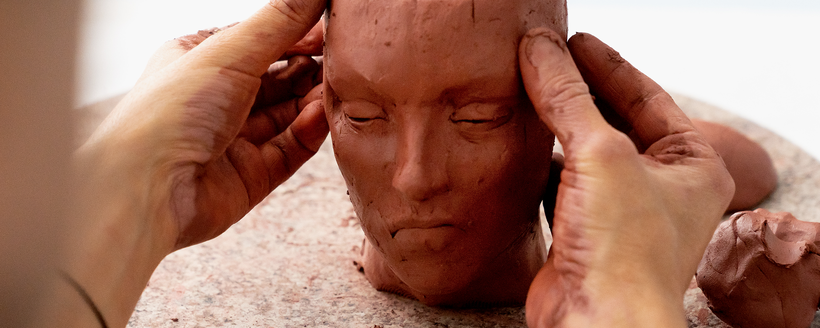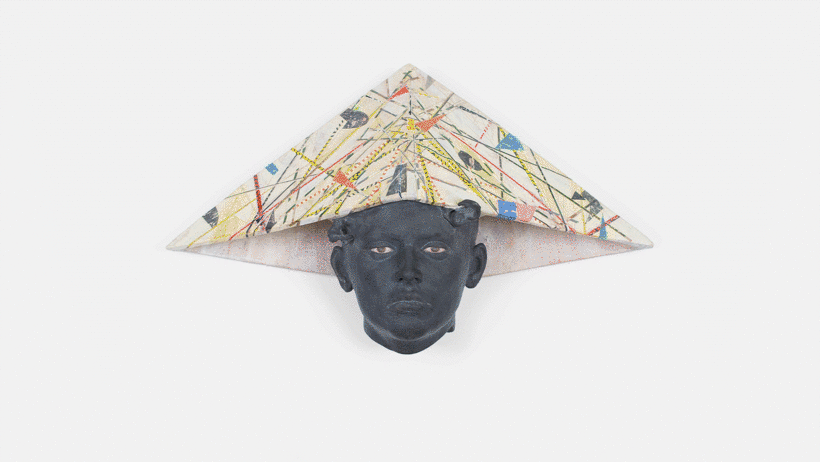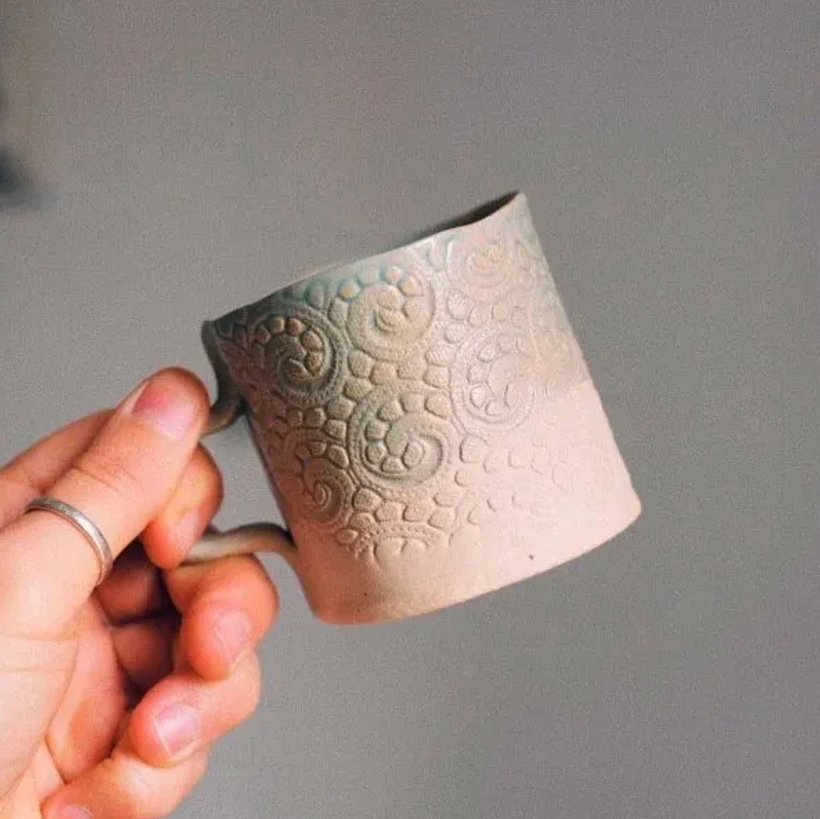8 Must-Know clay modeling techniques

Explore 8 essential clay modeling techniques, from pinching to slip casting, perfect for artists of all levels. Discover the ideal method for your next project!
Clay modeling techniques are diverse and provide artists with a range of possibilities for creating unique and expressive pieces. Here is a list of some common clay modeling techniques and a brief explanation of each:

1. Pinching: This technique involves shaping the clay by pinching it between the thumb and fingers. Pinching is often used to create small, hollow forms like bowls, cups, and pots. It is an excellent technique for beginners to develop a feel for the clay and control over its shape.
2. Coiling: Coiling involves rolling out long, thin ropes of clay and then stacking them to create a form. The coils can be left visible for a textured effect, or they can be smoothed and blended together to create a seamless surface. This technique is suitable for building larger, more complex shapes, such as vases or sculptures.
3. Slab building: Slab building involves rolling out flat, even sheets of clay and then cutting and assembling them into the desired shape. Slabs can be used to create boxes, cylinders, or more complex structures. This technique is ideal for creating geometric forms and requires careful attention to detail to ensure the edges and corners are neat and aligned

4. Sculpting: Sculpting is the process of shaping and carving the clay by hand or using various tools. This technique allows for a high degree of detail and is commonly used for creating figurines, busts, and other intricate forms. Sculpting requires patience, practice, and a keen eye for proportions and form.
5. Throwing: Throwing is the process of shaping clay on a potter's wheel. As the wheel spins, the artist uses their hands to manipulate and shape the clay into the desired form. Throwing is often used to create symmetrical, round objects like bowls, plates, and vases. This technique requires skill and coordination, as well as a thorough understanding of the properties of the clay being used.
6. Extruding: Extruding involves forcing the clay through a shaped opening or die, creating a continuous form with a consistent cross-section. This technique is often used for creating handles, borders, or decorative elements that can be attached to other clay forms. Extruders come in various shapes and sizes, allowing for a wide range of possibilities.
7. Press molding: Press molding involves pressing clay into a pre-made mold, either by hand or using a machine. This technique is useful for creating multiple identical pieces or for reproducing intricate details. Press molding is commonly used in mass production or for creating intricate relief designs.

8. Slip casting: Slip casting is a technique where liquid clay, or slip, is poured into a plaster mold. The plaster absorbs the moisture from the slip, leaving a layer of solid clay adhering to the mold's surface. Once the desired thickness is achieved, the excess slip is poured out, and the clay is left to dry before being removed from the mold. This technique is popular for creating complex shapes and delicate, thin-walled forms that are difficult to achieve with other methods.
Each clay modeling technique offers its unique benefits and challenges, allowing artists to choose the most suitable method for their creative vision and skill level. Experimenting with different techniques can lead to exciting discoveries and a deeper understanding of the versatile medium of clay.

Each clay modeling technique has its strengths and is best suited for specific applications or creative goals. Here's a summary of what each technique is best for:
Pinching: Pinching is best for creating small, simple, and organic forms, such as bowls, cups, and basic pots. It is ideal for beginners to gain a tactile understanding of the clay and learn to control its shape.
Coiling: Coiling is best for building larger and more complex structures, such as vases, sculptures, or irregularly shaped objects. It is particularly suitable for forms with gradual curves and allows for the creation of textured surfaces if the coils are left visible.
Slab building: Slab building is best for creating geometric forms, boxes, cylinders, or architectural structures. It allows for precise control over angles and edges and is ideal for incorporating patterns and textures through the use of stamps, rollers, or other texturing tools.
Sculpting: Sculpting is best for creating intricate, detailed, and realistic forms, such as figurines, busts, or relief sculptures. This technique is suitable for artists who have a keen eye for proportions and form and are willing to invest time and patience in achieving high levels of detail.
Throwing: Throwing is best for creating symmetrical, round objects like bowls, plates, and vases. It is ideal for producing functional pottery and requires skill and coordination to master the technique on a potter's wheel.

Extruding: Extruding is best for creating consistent shapes and forms, such as handles, borders, or decorative elements that can be attached to other clay forms. It is particularly suitable for adding uniform details or repeating patterns to larger pieces.
Press molding: Press molding is best for creating multiple identical pieces or reproducing intricate details with precision. This technique is ideal for mass production or for creating complex relief designs that would be difficult to achieve by hand.
Slip casting: Slip casting is best for creating complex shapes and delicate, thin-walled forms that are challenging to achieve using other methods. It is ideal for producing intricate and detailed objects, such as figurines, hollow vessels, or ornate decorative pieces.
The best technique for a particular project depends on the desired outcome, the artist's skill level, and the type of clay being used.
You may also like:
- Stamp Making for Textured Pottery
- Dyed Ceramics: Coloring Ceramic Paste
- Introduction to Kintsugi: Repair Your Pottery with Gold





4 comments
Thank your for your sharing about clay modeling techniques. I am keen on making clay products such as cubes 2048, angel statues, cute cups, and so on. I agree that sculpting is the most challenging process.
Clay modeling techniques are some simple strategies you may use to assist your pupils get going. You may witness their abilities develop as they start to create their own sculptures getting over it after they can execute all of these things without discomfort.
There are methods of clay hand building techniques such as Pinch pots, Coil method, Slab method where the clays materials can be made to any shapes and forms.
world of mario
Thanks !